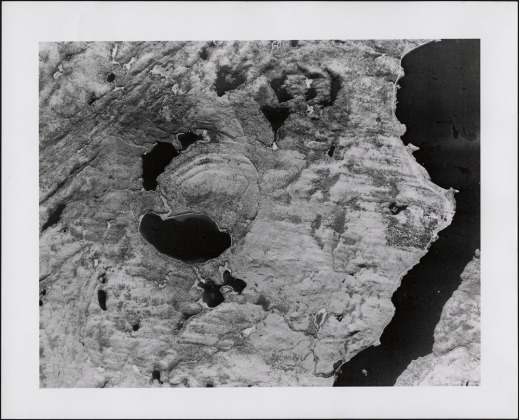By François Larivée
Canada’s Dominion Astronomer and the Dominion Observatory
It may be a little-known fact now, but for several decades, Canada had a Dominion Astronomer. This person was in charge of the Dominion Observatory in Ottawa, located on the Experimental Farm. The observatory was built in 1905 by the Geological Survey of Canada to provide precise temporal and spatial data for its mapping and topographic surveys. In those days, there were no atomic clocks to tell the exact time, so the movements of certain reference stars were used. Spatial coordinates were also determined by observing the precise position of a large number of stars. All of these observations were made using the telescope at the observatory. The Dominion Observatory was in operation until 1970, when its activities were transferred to the National Research Council of Canada.

Documents on the Dominion Observatory are archived in the Department of the Interior fonds and the Natural Resources Canada fonds. In addition, Library and Archives Canada has the fonds of the astronomer who was one of the Observatory’s most important directors, Carlyle Smith Beals (1899–1979), Dominion Astronomer from 1947 to 1964. During his career, Beals garnered international acclaim for his high-quality research and important discoveries. He not only was the director of the Dominion Observatory for nearly 20 years, but also carried out research in the vanguard of his field since the 1930s, when he began his career as assistant astronomer at the Dominion Astrophysical Observatory in Victoria, British Columbia.

From studying very hot stars and interstellar matter to studying impact craters
Beals conducted research at first on certain kinds of hot stars (P Cygni and Wolf-Rayet stars) and the chemical composition of interstellar matter. Among his important discoveries, Beals proved that hot stars are made up of large gas pockets and that interstellar matter is not distributed evenly throughout space. These discoveries were made while Beals was at the Astrophysical Observatory in Victoria, before he went to the Dominion Observatory in Ottawa. Another interesting fact about the Victoria Observatory, which is still in operation, is that when it first opened in 1918, the telescope, with its 1.83-metre-wide mirror, was for some months the largest in the world.


As Dominion Astronomer in Ottawa, Beals was very active both as a scientist and as an administrator. He was renowned for his research on meteor craters (also called impact craters) in Canada. This research was a key part of his later career and won him worldwide acclaim. After two meteorite impact craters, the Brent crater in Ontario and the New Quebec crater (now called the Pingualuit crater), were identified in the early 1950s, Beals launched a comprehensive program to find meteor craters across Canada. The work involved analyzing thousands of aerial photos from the National Air Photo Library and from National Defence, and conducting geological studies in the field. This extensive research program earned international recognition for Canada.

After retiring as Dominion Astronomer in 1964, Beals worked as a scientific consultant. He also continued his research on craters, including using observations and photos of moon craters from the Apollo missions. In fact, his fonds has some impressive photos from the NASA Apollo 15 mission. For the centennial of Confederation in 1967, he edited a book about Hudson Bay entitled Science, History and Hudson Bay and contributed a chapter on the possibility that the great arc of Hudson Bay was shaped by a large meteorite.

Related resources
- Carlyle Smith Beals fonds
- Department of the Interior fonds
- Natural Resources Canada fonds
- The Identification of Ancient Craters by Carlyle Smith Beals
- Terrestrial Meteorite Craters and Their Lunar Counterparts by Carlyle Smith Beals and Ian Halliday
- Science, History and Hudson Bay by C.S. Beals and D.A. Shenstone
François Larivée is an archivist in the Private Archives Branch.
